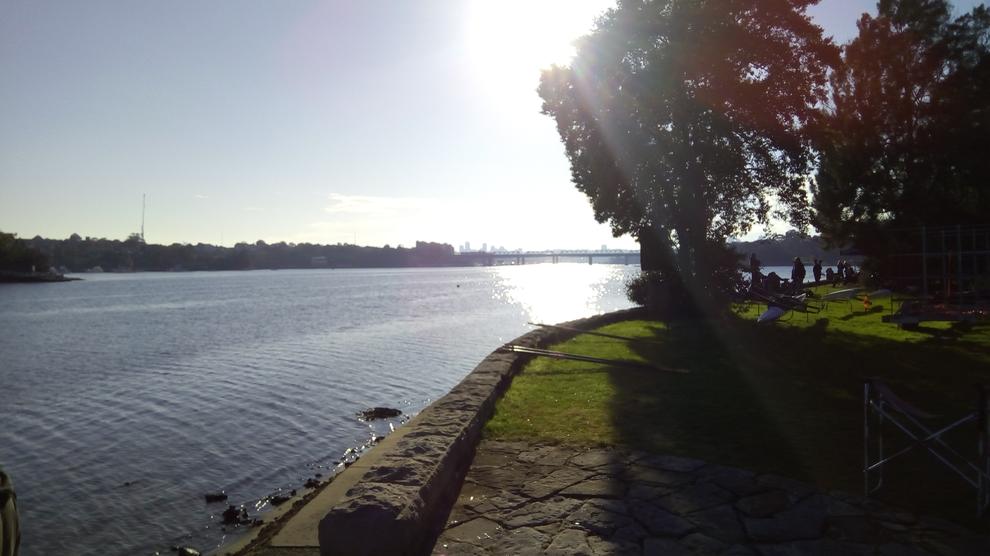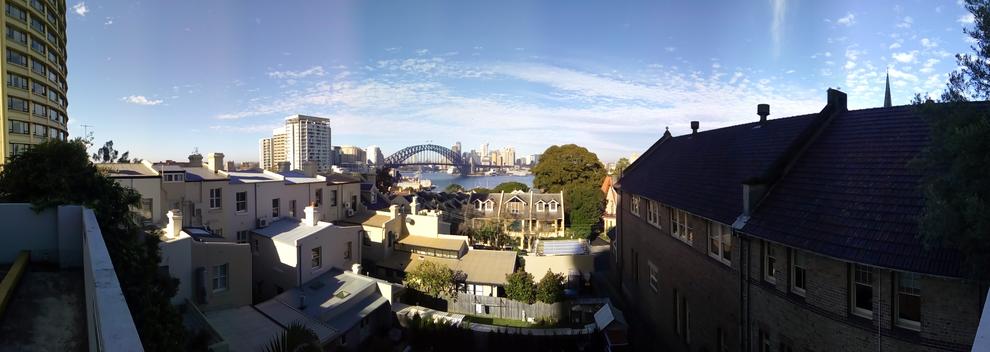
Kogan Agora 8 phone: Full, in-depth review
Will this super-cheap Android smartphone save you money?
Pros
- Cheap
- Generally quick
- Well built
Cons
- Poor cameras
Bottom Line
There's much to like with the Agora 8 - not least its price. But it's let down badly by its cameras.
-
Price
$ 199.00 (AUD)
We’ve reviewed so many Android phones in recent months and there’s been very little difference between most of them. However, here’s the second sub $200 phone we’ve reviewed in a week.
We were impressed with the $179 Alcatel A3 XL. The Kogan Agora 8 costs $20 more but is a very different proposition. The next best phones we see cost over $100 more. So is it worth paying more?
Key specs
5in, 720 x 1280 LCD screen, 2GB/16GB RAM, 1.3GHz quad-core CPU, 13MP rear and 5MP front cameras, MicroSD/Dual SIM slot (second SIM slot is 2G), Micro USB, Android 7, 2400mAh battery, 143 x 71 x 6mm, 138g.
Design and handling
First off, this is a classy-looking device. The looks and build quality belie the budget nature of the phone with the glass surface sitting atop a ‘brushed metal-esque’ (plastic) side and base. At 6mm it’s very thin too. Often this can be a harbinger of bad battery life but we’ll check on that later.

The screen is made from Dragontrail Glass which is a Japanese version of Gorilla Glass (we’re not sure which version though). The screen is bright but colours can be a little washed out compared to the best phones. This is hardly a deal breaker, but if you like showing off pictures, we’ve seen them look slightly better elsewhere. The regular HD (720p) resolution also means that details aren’t quite as sharp as with other phones, but on a small, 5-inch screen this isn’t much of an issue.
Indeed, at this size, the whole phone feels very small (and light). If you’ve got big hands this may be an issue, not just for general usage, but reaching the fingerprint reader on the back – doing so can require a bit of contortion we found. Generally, the fingerprint reader worked OK but it’s not the fastest nor the most accurate we’ve seen and sometimes we needed two-or-three attempts to unlock it.

Kogan doesn’t give out detailed specs so all we know about the innards are that there’s a 1.3GHz, quad-core processor with 2GB RAM and 16GB memory. It’s certainly not as responsive as the top-end phones we’ve been reviewing lately, but simply opening apps and switching screens isn’t a chore and general handling is still relatively quick. We don’t know what the graphics chip is, but it handled the graphically-demanding Need For Speed No Limits smoothly. Angry Birds also ran smoothly too. Pokemon Go has a new update with new, complex gyms. These proved a bit taxing for the Agora but it was still very playable.
In terms of audio quality, there’s just a single speaker at the bottom (as with most phones) but it doesn’t get very loud. Bass doesn’t really exist but music and movie audio still remains distinct and well rounded – we wouldn’t call it tinny. As for conference calls, the lack of volume may be an issue for some, but our calls were still usable.
The microSD/SIM tray can double as a dual SIM slot, but it's worth noting that the second SIM is 2G only and some countries (including Australia) have already turned their 2G networks off.
Ultimately, the phone feels very usable for all applications but loading times are just that bit more stretched. It’s not a big deal under general usage but for big games and apps, expect to be waiting for the best part of a minute on some occasions.
Camera
The main camera is 13-megapixels while the selfie camera offers just five. Taking snaps feels quick and simple with minimal focusing lag. The problem is, that while we’ve come to expect this level of responsiveness from phone cameras, we also expect focusing to be accurate. The Agora regularly wasn’t. Many shots, including landscapes came out poorly focused and not sharp (thanks to excessive sharpening artefacts). Expect to be tapping on the screen to focus most of the time.

Not that this would help much. Images were frequently soft. Unless lighting and focusing was perfect we’d rarely get quality shots. In tricky lighting the Agora is one of the worst performers we’ve seen – a bright sky can completely flummox it with bright areas dramatically overpowering everything else.

And we weren’t too impressed with sharp, well exposed shots either. Skin tones tended to have a yellowish tinge and colours on landscapes were frequently washed out.

Read more: Alcatel A3 XL phone: Full, in-depth review


Panoramas were stitched together generally well but some lighting transitions could be a bit abrupt. Using HDR to improve lighting meant you had to have good focus and be statuesque lest images came out blurry and soft – something which we found very tricky to pull off.



Selfies weren’t much better. Five-megapixels is too low in our opinion but that wasn’t the only reason so many shots came out soft. There’s a Beauty Mode available but it didn’t seem to do much.


Videos were disappointing. Dynamic range was poor – any scenes with light and dark in them tended to come out too bright in places and black everywhere else. Focusing was very unreliable, you’d need to constantly manually refocus or get left with blurry images. Forget about walking or panning shots as any motion in this area produced horrendous footage due to a lack of stabilization. Also sound was mediocre and background noise was recorded with a robotic bent when inside. Low light performance was extremely poor. If you’re motionless in a well-lit, quiet environment and shooting subjects with minimal motion, you should get usable footage. But that’s about it.
Next: Battery Life and Conclusion
Brand Post

Most Popular Reviews
- 1 Dell U3223QE review: A winning debut for an IPS Black monitor
- 2 HP Spectre x360 16 review: The right 2-in-1 at the wrong time
- 3 Acer K242HYL review: An affordable monitor for any occasion
- 4 GeForce Now review: You bring the games, Nvidia streams the hardware
- 5 Asus ProArt PA279CV monitor review: The go-to for content creators on a budget
Latest News Articles
- Apple releases major updates to Logic Pro for Mac and iPad
- Apple posts another quarterly dip as Mac sales drag
- The iPhone 16’s A18 chip will change everything and nothing
- Microsoft may be readying Bing’s AI chatbot
- Security researchers warn of a new Google malware scam that could infect Macs
Resources
Macworld
What's new, plus best mac-related tips
and tricks

Business Centre
The latest business news, reviews, features and whitepapers

Videos
Watch our video news and reviews from around the world

Guides
Comprehensive buying guides, features, and step-by-step articles

PCW Evaluation Team
Pedro Peixoto
Aruba Instant On AP11D

Set up is effortless.
Cate Bacon
Aruba Instant On AP11D

The strength of the Aruba Instant On AP11D is that the design and feature set support the modern, flexible, and mobile way of working.
Dr Prabigya Shiwakoti
Aruba Instant On AP11D

Aruba backs the AP11D up with a two-year warranty and 24/7 phone support.
Tom Pope
Dynabook Portégé X30L-G

Ultimately this laptop has achieved everything I would hope for in a laptop for work, while fitting that into a form factor and weight that is remarkable.
Tom Sellers
MSI P65

This smart laptop was enjoyable to use and great to work on – creating content was super simple.
Lolita Wang
MSI GT76

It really doesn’t get more “gaming laptop” than this.
Featured Content
- Which Lenovo Laptop Should I Buy?
- Every TV in Samsung's 2022 line-up: OLED, Neo QLED and more!
- Top 10 best Android and Apple phones for under $600
- Everything you need to know about Smart TVs
- What's the difference between an Intel Core i3, i5 and i7?
- Laser vs. inkjet printers: which is better?










